Table of Content
3D Printed Construction is rapidly emerging as a groundbreaking technology in the real estate industry, offering the promise of faster construction timelines and potential cost savings. With projects like India’s first 3D Printed villa by Godrej Properties completed in just four months, experts are weighing in on whether this innovative approach can revolutionize both housing and commercial projects.
In this blog, we explore the benefits, challenges, and future prospects of 3D Printed Construction, and take a closer look at how this technology is paving the way for a new era in construction.
What is 3D Printed Construction?
3D-Printed Construction refers to the use of additive manufacturing techniques to build structures layer by layer rather than using traditional construction methods. This process involves a 3D printer that extrudes a specialized concrete mixture often enhanced with quick-drying adhesives and other additives to form walls and structural components with high precision. Unlike conventional construction, which can be labor-intensive and time-consuming, 3D printing in construction aims to reduce material waste, lower labor costs, and significantly speed up the building process.
Also Read: How Budget 2025 Impacts Homebuyers: Affordable Housing
Key Benefits of 3D Printed Construction
1. Faster Construction Time
One of the most significant advantages of 3D Printed Construction is the dramatic reduction in construction time. For example, Godrej Properties recently completed a ground-plus-one (G+1) villa in Maan Hinjewadi, Pune, in just four months a fraction of the time required by traditional methods. This speed not only accelerates project delivery but also allows developers to tap into market demand more quickly.
2. Cost-Effective in the Long Run
Although the initial costs for 3D Printed construction can be high due to limited scale and early-stage technology investments, experts suggest that these costs are likely to decrease as adoption increases and material supply chains mature. The technology’s precision reduces material waste and labor costs, which can result in significant long-term cost efficiencies, particularly for large-scale housing and commercial projects.
3. Sustainability and Reduced Waste
Environmental sustainability is a key advantage of 3D Printed Construction. The process minimizes construction waste by using only the exact amount of material needed for each layer. Additionally, many 3D printing techniques allow for the incorporation of recycled materials, reducing the overall environmental footprint. The energy efficiency of the structures is also enhanced through innovative design and precision engineering.
4. Design Flexibility and Innovation
3D printing offers unparalleled design flexibility. Complex architectural features and customized designs that would be challenging or expensive to achieve through traditional methods can be easily incorporated into 3D Printed structures. This allows developers to create unique, aesthetically pleasing buildings that stand out in the market.
3D Printed Construction Projects
Godrej Properties’ 3D Printed Villa
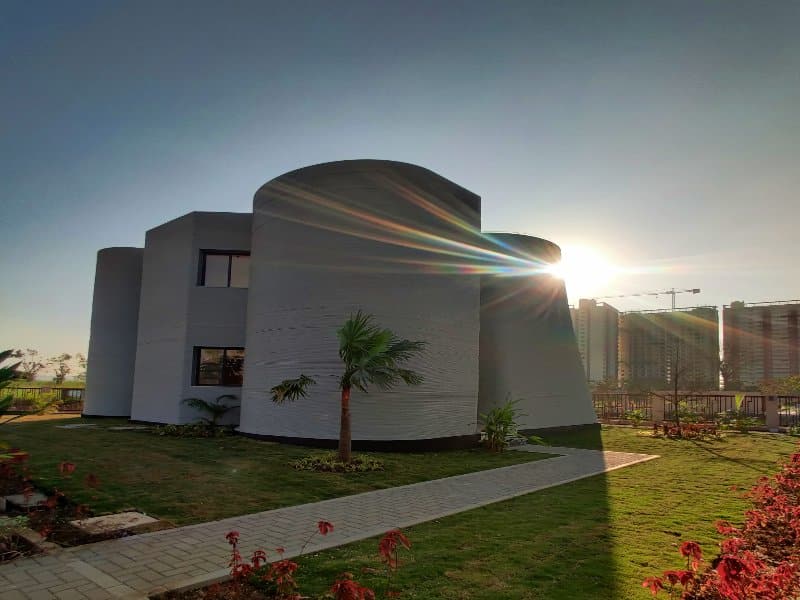
One of the most talked-about examples of 3D Printed Construction in India is the G+1 villa at Godrej Eden Estate in Maan Hinjewadi, Pune. Developed in collaboration with Tvasta Engineering, this project was completed in just four months using advanced additive manufacturing techniques. Spanning over 2,200 square feet, the villa features an organic, fluid design that maximizes natural light and offers superior insulation. The project not only showcases the speed and efficiency of 3D printing but also its potential to integrate modern aesthetics with sustainable building practices.
L&T’s 3D Printed Projects in Bengaluru
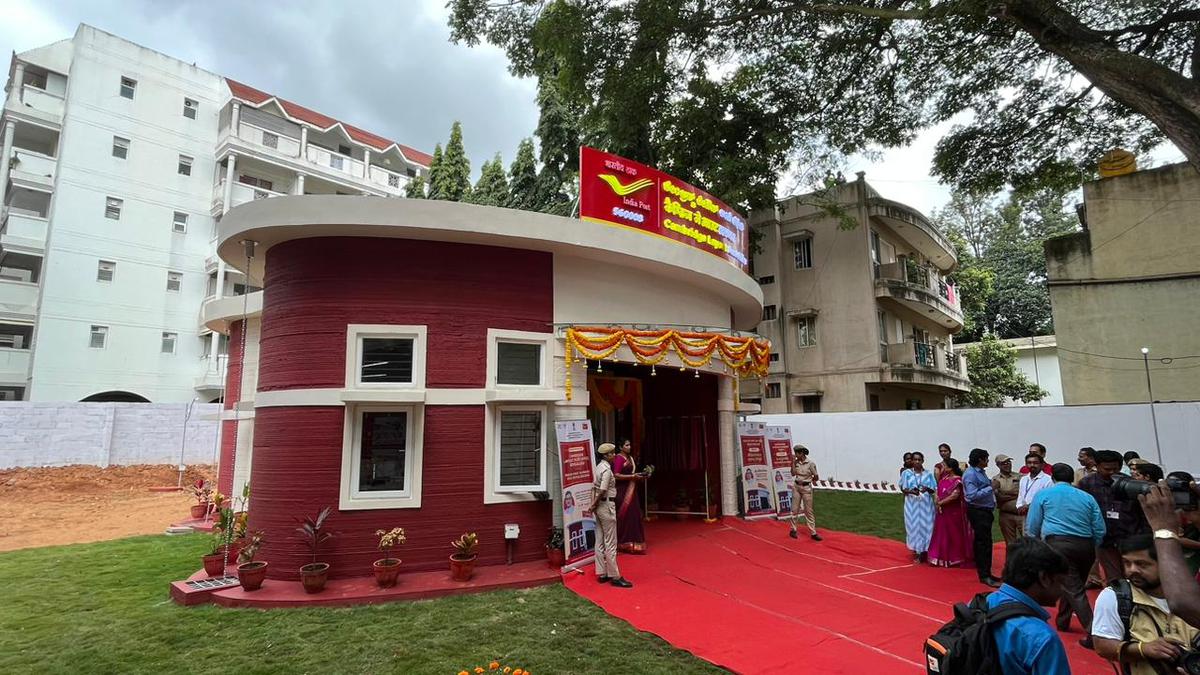
Earlier examples include Larsen & Toubro’s (L&T) ventures in Bengaluru, where the company constructed India’s first public building and a set of high-end villas using 3D printing technology. These projects demonstrated that, although still in an experimental phase, 3D Printed Construction can be effectively scaled for both public and luxury residential applications. They serve as important benchmarks for the industry, highlighting the potential and challenges of this emerging technology.
Expert Insights on 3D Printed Construction
Industry experts have mixed opinions about the future of 3D Printed Construction. On one hand, the technology offers significant time savings and the promise of cost efficiencies. For instance, experts like Rahul Bahl from innovative construction firms note that while the upfront costs are currently high, economies of scale and improvements in material supply chains could make 3D printing a viable alternative for mass housing and rapid infrastructure projects.
On the other hand, some architects and developers caution that regulatory hurdles and scalability remain significant challenges. Sahir Choudhary, a senior architect, has highlighted that the technology, though promising, is still evolving. However, he remains optimistic about its long-term potential, particularly if industry practices standardize and government policies adapt to support innovative construction methods.
3D Printed Construction in Residential and Commercial Sectors
Residential Projects
For affordable housing and rapid urban development, 3D Printed Construction holds immense promise. The ability to construct homes in a fraction of the time can revolutionize the way developers approach affordable housing. Faster construction means quicker occupancy, which is critical in high-demand urban markets. Moreover, the flexibility of design allows for creative, space-efficient layouts that cater to modern living needs.
Commercial Projects
Commercial real estate can also benefit from 3D printing. Customized designs, reduced construction timelines, and lower material wastage can translate into cost savings for office complexes, retail spaces, and industrial buildings. As cities grow and evolve, the rapid deployment of commercial spaces using 3D printing could address the urgent need for modern, adaptable infrastructure.
Future Prospects and Challenges
While the current applications of 3D Printed Construction in India are mostly limited to pilot projects and small-scale ventures, the future looks promising. As technology matures, we can expect:
- Lower Costs Over Time:
As more projects adopt 3D printing and supply chains improve, the initial high costs are likely to fall, making it a more cost-effective solution for large-scale developments. - Regulatory Evolution:
Government policies and building regulations will need to evolve to accommodate these new construction methods. Clear guidelines will be essential to ensure safety, quality, and consistency. - Broader Adoption:
With continued innovation, both residential and commercial sectors stand to benefit from faster construction times and greater design flexibility, paving the way for more sustainable and resilient urban development.
Conclusion
3D Printed Construction is poised to revolutionize the real estate industry by offering faster construction, reduced material waste, and innovative design possibilities. Although currently more expensive due to limited scale and high initial costs, its potential for long-term cost efficiency and rapid project delivery cannot be ignored. Landmark projects like Godrej Properties’ 3D Printed villa in Pune and L&T’s ventures in Bengaluru showcase how this technology can redefine modern housing and commercial developments.
For homebuyers, developers, and investors, embracing 3D Printed Construction could mean access to innovative, sustainable, cost-effective building solutions. As the technology matures and regulatory frameworks evolve, the prospect of mass housing and rapid infrastructure development through 3D printing looks increasingly promising. Stay informed about this emerging trend and its transformative potential as it paves the way for a smarter, more efficient future in construction.
Embrace the revolution in construction technology and explore how 3D Printed Construction can reshape the way we build our cities, making them more sustainable, cost-effective, and architecturally inspiring.
Also Read: Are Extra Parking Fees by Societies Legal? What You Need to Know

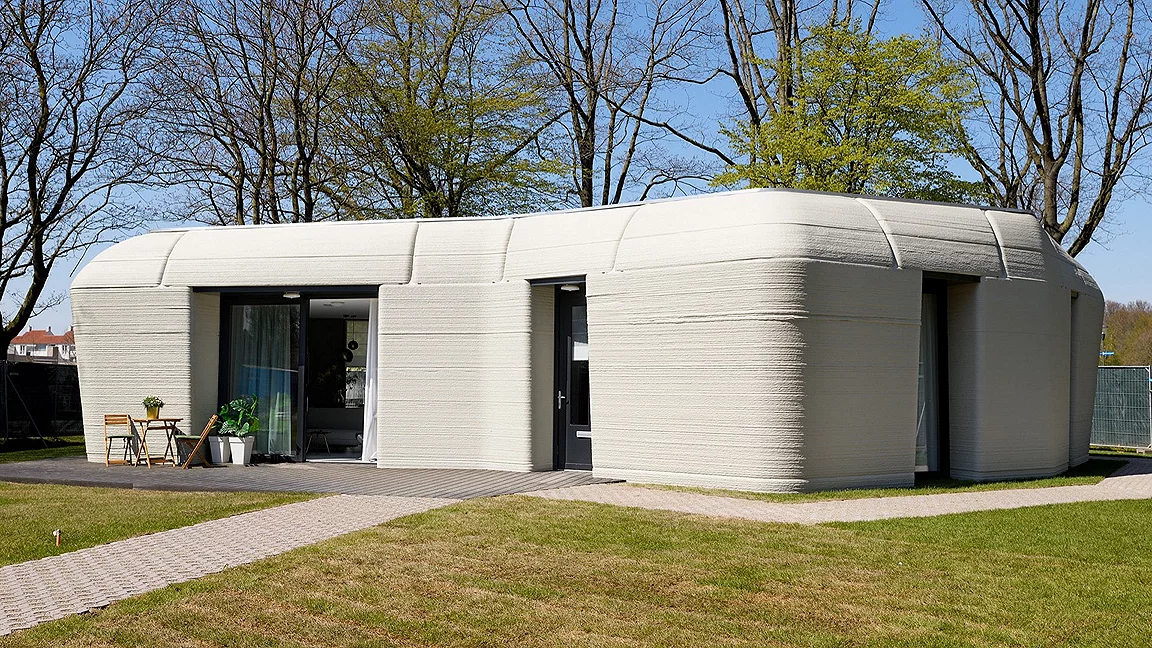


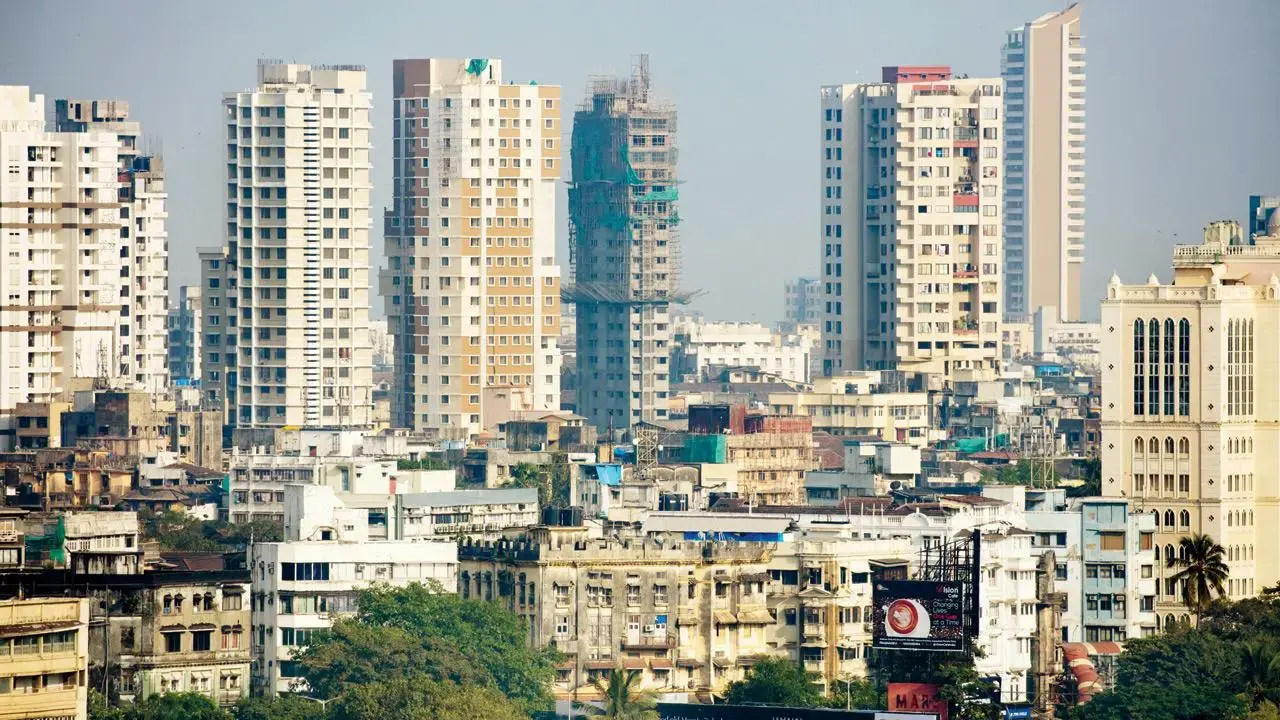
_1764657403.webp)

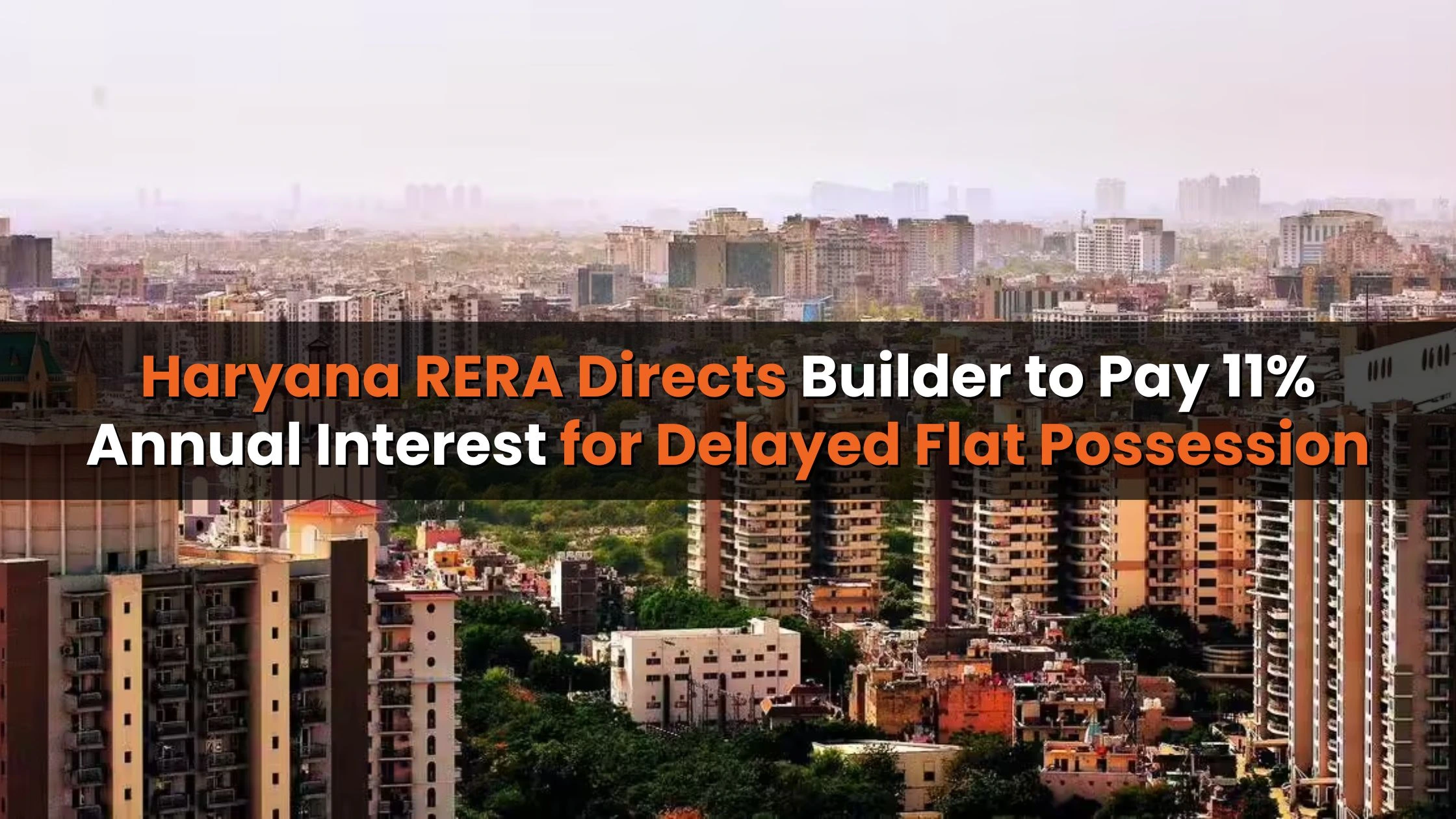
Ans 1. 3D-Printed Construction uses additive manufacturing to build structures layer by layer with specialized concrete mixtures, reducing construction time and material waste.
Ans 2. It offers faster build times, reduced labor costs, minimal waste, and innovative design flexibility that can lower long-term project expenses.
Ans 3. Projects include Godrej Properties’ 3D-printed villa in Pune and various initiatives by L&T in Bengaluru, showcasing the technology's potential in residential and commercial sectors.
Ans 4. By using only the necessary amount of material and the potential to incorporate recycled components, it significantly reduces waste and environmental impact.
Ans 5. High initial costs, regulatory hurdles, and scalability remain key challenges, though these are expected to improve as technology matures.
Ans 6. Yes, it is versatile and can be tailored for both sectors, enabling creative, custom designs for homes and efficient, modern structures for businesses.
Ans 7. Advancements in technology and regulatory support are expected to lower costs further and expand its adoption, revolutionizing urban development.
Ans 8. It allows for complex, customized architectural features that are often unfeasible with traditional construction methods, offering unique aesthetic solutions.
Ans 9. Investors can capitalize on faster project delivery and long-term cost efficiencies, though they should also monitor regulatory and scalability developments.
Ans 10. While still emerging and evolving, successful pilot projects demonstrate its potential, and ongoing innovations are paving the way for broader application in the real estate market.